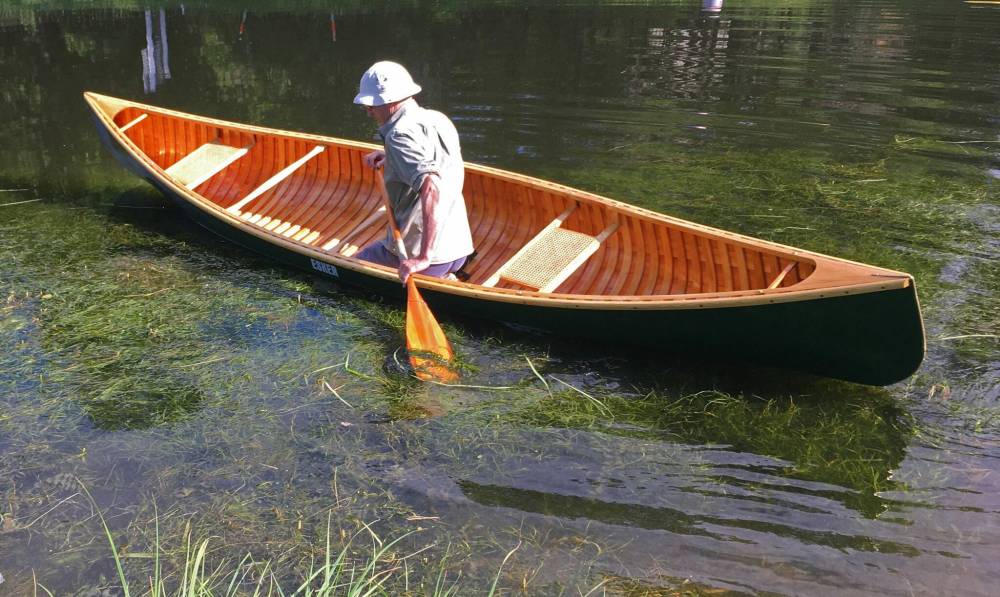Custom canoes made to order
Advertisement
Hey there, time traveller!
This article was published 09/08/2023 (866 days ago), so information in it may no longer be current.
Not many people who enjoy canoeing in the summer also make their own canoes.
Veteran canoe and boat builder Carl Hrenchuk exudes a love for not only canoes and canoeing but also canoe building. In his retirement, he has been building custom, 16-foot cedar and canvas canoes at cost for interested clients. Each canoe can be customized by colour or to suit projected use.
Hrenchuk brings plenty of boat-building experience to the table. In the late 1970s, he built his first cedar and canvas canoe, and says he learned making canoes by making canoes. Inspired by a friend who had made his own canoe, Hrenchuk developed his craftmanship by repairing many canoes, consulting some excellent books, and working on other complex projects, such as making acoustic guitars.

Supplied photo by Christine Johnston
Canoe builder Carl Hrenchuk paddles one of his creations.
In the 1980s, Hrenchuk owned and operated Esker Canoe Company in northern Manitoba, where he built two styles of canoes: 16-foot paddling canoes, and 19-foot, flat-wide freighters. Parks Canada hired Hrenchuk and a small team to build two 34-foot replica York boats using modern materials and a 42-foot reproduction using traditional methods and local woods. One reproduction now sits on public display at Lower Fort Garry National Historic Site.
After how much a finished canoe weighs, Hrenchuk said he’s most often asked how long it takes to make one canoe from beginning to end.
“As long as it takes,” is his typical response. “I don’t keep track of my hours. Typically, you don’t do one canoe beginning to end because, for example, once the canvas is on the canoe, it’s filled with a clay-based filler to make it tough and that needs to sit for at least a month before you paint. You will do some milling of planking and then go to another task, like preparing for bending the approximately 60 ribs. Usually if someone orders a canoe, it could take three to four months before I would deliver it. I want to keep this as a hobby, rather than recreate my former business. My clients get a quality, hand-built canoe at an incredible price, and I get the opportunity to build canoes at my own pace.”
As for that question about weight: “It depends on the woods used, but about 65-70 pounds.”
Hrenchuk’s knowledge of wood and its specific properties guides his decisions on wood selection.
“I use eastern white cedar for the ribs. It bends the best, is rot-resistant, and far less brittle,” he said. “But since it is not readily available in long lengths or widths and free of knots, I use western red cedar for the planking. For the gunwales, I use sitka spruce because it is very strong and light, has straight grain, and takes wonderful, even curves.”

Supplied photo by Carl Hrenchuk
This photo of the bow of a handmade canoe shows off the detail and beauty of the structure.
“I have always been in love with canoeing, and I’ve spent a lot of time in the bush. I like to continue building canoes because I enjoy it,” he said, when asked why he’s continued building canoes in his retirement. “It’s a beautiful experience. I would also like the cedar-and-canvas canoe to continue its long history and would like to expose more people to its virtues.
“After all, it was the preferred working canoe in northern Canada for over 90 years. They take more maintenance than many other canoes, but there is nothing quieter in the water. And all those consecutive curves are just gorgeous, visually.”
For more information, email Hrenchuk at chrenchuk@gmail.com




